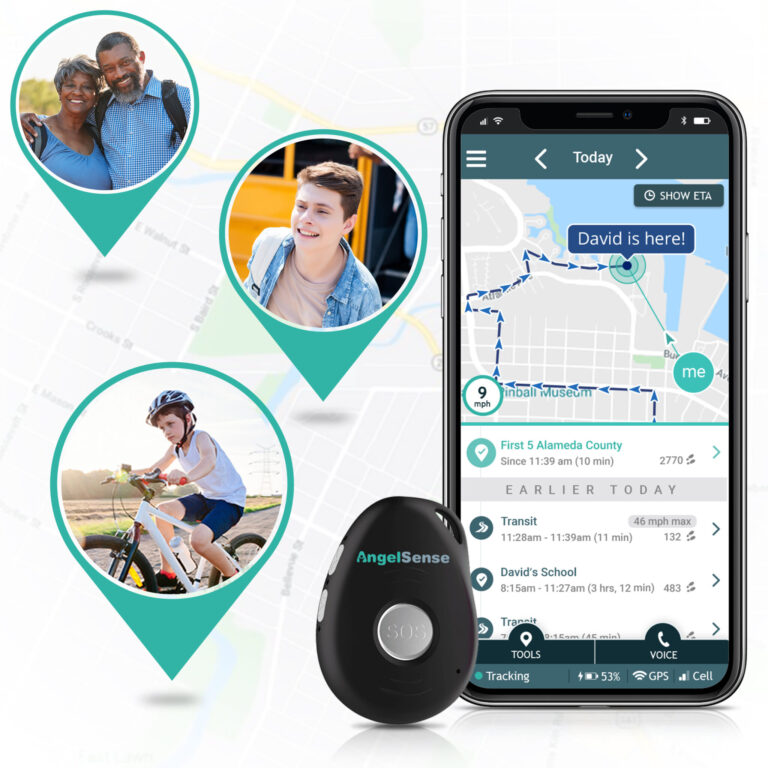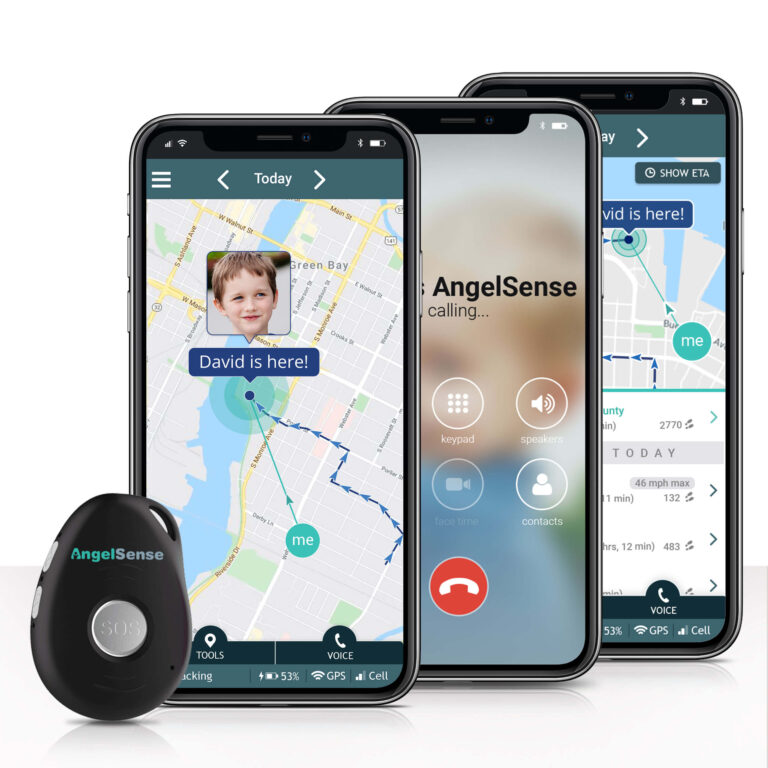We've worked with AngelSense for several years, helping to educate families about this specifically-designed tool to help keep all families safer. In 2016, we met with the experts at AngelSense to gather and report useful information on raising a child with special needs.
Although some years have passed, we continue to be impressed with AngelSense and find this interview helpful. Continue reading below for insights, tips, and tools to assist with your child's safety.
What are some of the responsibilities that come with raising a child with special needs? What are the most serious health, safety, and injury risks that children with special needs encounter?
While each child with special needs faces unique and specific health and safety issues, you can say that one of the major issues is the tendency to wander away or elope from safe settings. Unfortunately, this coupled with the fact that children with special needs may not have an awareness of danger can lead to life-threatening situations with a high rate of fatalities from car accidents and drownings.
Special needs parents also have to make sure that school staff is fully aware of their child’s sensitivities and possible trigger points that could cause them to become withdrawn, have a meltdown or elope. Making sure the child’s individual requirements are always taken into account is key. However, parents concerns often don’t end there. Abuse and mistreatment at the hands of caregivers as well as bullying by fellow students have been widely reported and are much more prevalent among special needs children than the general student population. In addition, special needs children can be easy targets for kidnappers.
How does GPS tracking help you better take care of a child with special needs?
The AngelSense GPS Tracker was created to address the specific challenges special needs families face, providing parents with capabilities that go well beyond typical GPS tracking. First, there is the issue of having the child keep a GPS device on. Most children with special needs will not tolerate it due to sensory issues and will quickly discard it. That’s why the AngelSense device is attached to children’s clothing with sensory friendly accessories and can’t be removed without help from a parent.
With AngelSense, you can take better care of your special needs child on every level. You can keep your child safe making sure they don’t wander away or get lost and also protect them from bullying and mistreatment. The added bonus of the solution is that you’re truly involved in your child’s day, which can often deepen your connection with him or her.
AngelSense sends you text messages every time your child arrives at a location or leaves it. You get a detailed timeline that tells you exactly where your child is, lets you know when they’re on the move, how fast they’re traveling and how long it took them to reach their Next destination. You can also track your child’s exact routes on a real-time map.
If you’re concerned that your child is being bullied or mistreated, the listen-in capability allows you to check up on your child at a click of a button. You can hear how he or she is doing and what’s happening around them.
Only the full-day uninterrupted monitoring described here can effectively safeguard a child with special needs, as there are so many things that can easily go wrong in the course of a day. With AngelSense parents are immediately aware if there is a problem and are armed with the necessary information to deal with the situation quickly and effectively.
How does GPS tracking help your special needs child feel safer?
With AngelSense the device stays attached to the child in a secure way so they know that it can’t be taken away from them. The timeline view shows google pictures of all the places your child has visited. At the end of each day kids often enjoy reviewing their timelines and the ‘highlights’ with their parents. This can be a bonding experience and shows the child that their parents are involved. They also feel that their parents are always with them, keeping them safe, even if they aren’t physically present.
What are some of your personal must-have features when it comes to keeping track of your child?
- Wearing accessories that address sensory sensitivities
- Full-day continuous monitoring including clear transit routes
- Alerts for changes in routine such as Unknown Place Alerts or Late Departure Warnings
- Ability to listen in to my child
- Ability to effectively track and locate my child if he were to get lost
What should a parent do if they see that their child is in distress or danger?
I think the key is to take advantage of AngelSense’s emergency features. If parents get a notification that their child is in an unknown place, and see that they are on the move, they should use Runner Mode with GPS updates every 10 seconds. In this mode they get directions and distance readings in a map view so they can locate their child as quickly as possible.
If parents suspect that something is not right and that their child may be a target of bullying or mistreatment they should listen-in to gage the situation. A good example of this is a mother that listened-in to her son’s device when his school bus was running late. She heard her son screaming because he was being bullied and the bus monitor unable to get control of the situation. She could see exactly where the bus was and quickly get to her son to comfort him. She has since taken the necessary measures to make sure this doesn’t happen again. Another case was a mother that got an alert for an unknown place, and through listening-in realized that her daughter was being sexually assaulted. She then, of course, alerted the police and could give them location coordinates.
What tips can you give to help parents get the most out of their tracker?
It’s important that parents take the time to figure out what wearing option is best for their child. For example, for some children attaching the GPS to their pants pocket in not an option because they have a tendency to take their clothes off. In these cases we would recommend attaching the device to a belt that’s worn underneath the clothing and can’t be removed by the child. There are other wearing options, each designed to accommodate different requirements and sensitivities, and to make wearing the device second nature.
With AngelSense, parents get alerts for any unexpected change in their child’s routine that indicates that there may be a problem. For instance the Unknown Place Alert. To make the most of this feature, parents need to properly define names for the places their child visits regularly. This ensures that the alert “your child is in unknown place” is real, meaning that they are truly in an unfamiliar place.
The same goes for other important alerts like the Late Departure Warning. Parents must define the correct departure time for each location in order to get an alert if their child hasn’t left school or any other place on time.
Lastly, we recommend that parents take full advantage of the features that enlist the help and support of their community in keeping their child safe. One of these is the Early Responder Alert which notifies a predefined list of people that there is an emergency and provides them with temporary access to the GPS updates. Parents should input a complete list of the people they’d like to send this alert to.
Related pages on SafeWise
Caveat: SafeWise strives to use inclusive language in all of our publications. We usually opt for person-first language and we found that in the case of children with special needs, there are many opinions about person-first versus identity-first language. For this article, we followed the lead of the experts we interviewed, which led us to use both person-first and identity-first language. Although the semantic approaches may vary, we remain committed to respectful and inclusive language, and we want to hear your thoughts and questions. Please send feedback to info@safewise.com.





